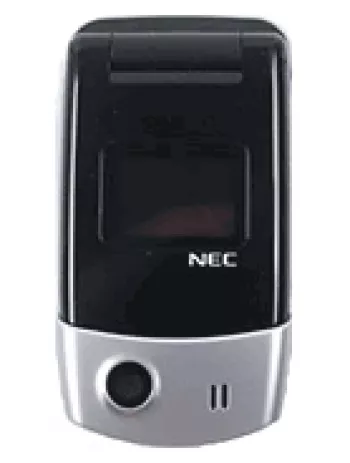
Overview of NEC N160
The NEC N160 is a feature phone that was launched in the fourth quarter of 2004, marking a time when smartphones were beginning to make their mark but feature phones still held significant market share. The device is recognized for its compact design and a variety of basic features that cater to users looking for simplicity and basic functionality in a cell phone.
Network Technology
The NEC N160 functions on GSM technology, specifically supporting GSM 900/1800 bands. This was a standard network configuration at the time, providing robust network support for cellular communications. The phone offers GPRS Class 10 technology, which allows for basic internet connectivity, not considered fast by today's standards but sufficient for basic data needs at the time.
Design and Build
The phone features dimensions of 82.5 x 45 x 22.6 mm and weighs just 80 grams, making it both compact and lightweight, easily pocketable for convenient storage and transport. Constructed to fit a mini-SIM card, it adheres to the design norms of its era, focusing on simplicity and functionality over form factor innovations.
Display Features
Equipped with a CSTN, 65K colors display, the NEC N160 provides a visual interface suitable for its purpose during its time of release. The screen resolution is 128 x 128 pixels in a 1:1 ratio. Although these specifications are modest by modern standards, they were acceptable for a feature phone designed for basic tasks such as calling and messaging.
Memory and Storage
The NEC N160 includes 30MB of internal storage, which is quite limited compared to today's standards, but was typical for feature phones of that time. The device does not support expandable storage, but it can store up to 500 phonebook entries and has call record capabilities for 20 dialed, 20 received, and 20 missed calls, which suffices for basic user needs.
Camera Capabilities
Featuring a VGA camera, the NEC N160 allows users to take basic photos and videos. While not suitable for high-resolution images, it provides functionality for users requiring a simple camera for capturing moments without the need for high detail or color fidelity.
Sound and Alerts
The device does not have a loudspeaker or a 3.5mm audio jack, which limits its audio output capabilities. It supports vibration and downloadable polyphonic ringtones for alerts, serving the fundamental requirements of audio notifications in feature phones.
Connectivity Options
On the connectivity front, the NEC N160 lacks wireless LAN and Bluetooth capabilities. There's also no radio or positioning sensor, reflecting the limited connectivity options typical of feature phones introduced in the early 2000s. The phone does not specify USB connectivity, which suggests limited options for data transfer.
Messaging and Browser
In terms of messaging, the NEC N160 supports SMS, EMS, and MMS, enabling users to send and receive basic text and multimedia messages. The device includes a WAP 1.2.1 browser, which allows for limited web browsing, primarily text-based and constrained by the technological standards of the time.
Games and Entertainment
The NEC N160 comes with four pre-installed games, catering to entertainment needs in a minimalistic form. These games reflect the technological constraints of the device, offering simple, casual gaming experiences typical of the feature phone era.
Battery Life and Usage
Powered by a removable Li-Ion 720 mAh battery, the NEC N160 ensures a level of power sustainability suitable for its limited function set. Due to the minimalistic requirements of the device's components, the battery life sufficed for average daily use, catering to users who primarily utilized the phone for calls and messaging.
Conclusion
The NEC N160 embodied the characteristics of typical feature phones of its time, providing essential mobile communication functionalities without the complexities of modern smartphones. With its lightweight design and basic features, it served as a reliable device for users seeking straightforward communication capabilities. Despite being discontinued, it remains a representative example of the transition phase in mobile technology where feature phones gradually gave way to more advanced smartphones.
Main Features of NEC N160
- Compact and Lightweight Design: Dimensions of 82.5 x 45 x 22.6 mm and weighs only 80 g.
- Color Display: 65K colors CSTN display with 128 x 128 pixels resolution.
- GSM Technology: Supports GSM 900 / 1800 bands.
- GPRS Class 10: Provides enhanced data speeds.
- VGA Main Camera: Allows for capturing basic photos and videos.
- Large Phonebook Capacity: Stores up to 500 contacts.
- Memory: 30MB of internal storage for saving contacts and messages.
- Messaging Capabilities: Supports SMS, EMS, and MMS for communication.
- Java Support: Allows for downloading and playing Java-based games and applications.
- Polyphonic Ringtones: Supports downloadable ringtones for personalization.
NEC N160 Main Disadvantages
- No support for EDGE network.
- Discontinued; no longer in production.
- No external memory card slot for storage expansion.
- No selfie camera available.
- No loudspeaker feature.
- Lacks a 3.5mm audio jack for headphones.
- No Bluetooth connectivity option.
- No WLAN support for internet connection.
- No positioning or GPS functionality.
- No radio feature.
- Limited usable internal storage with only 30MB.
View Also
More Phones
All Rights Reserved +14266 Phones © Mobilawy 2025
























